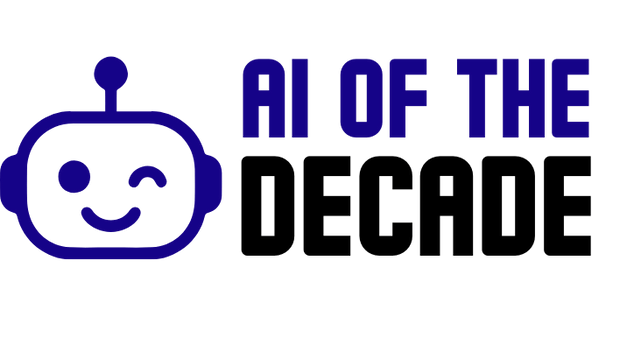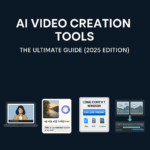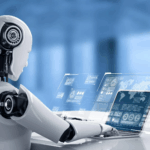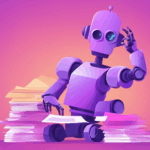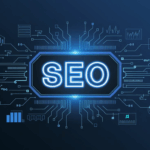Artificial Intelligence (AI) has evolved from a futuristic concept into one of the most disruptive forces of the 21st century. Over the last decade, AI has reshaped industries, transformed business models, and influenced how people interact with technology daily. By 2025, AI is no longer confined to experimental labs — it is embedded in our homes, workplaces, and even the way governments and societies function.
The global AI market is expected to surpass $300 billion by 2025, driven by rapid advances in generative AI, automation, predictive analytics, and ethical governance frameworks. From healthcare breakthroughs to hyper-personalised marketing campaigns, AI is redefining how humans and machines collaborate.
In this article, we will explore the top AI trends of 2025, covering emerging technologies, business applications, and predictions shaping the future. Whether you’re a business leader, startup founder, tech enthusiast, or student, this guide will help you understand how AI will impact the world in the years ahead.
👉 Stay tuned as we dive into the future of AI 2025, examining how innovations will bring both unprecedented opportunities and critical challenges.
The Future of AI in 2025
As we step into 2025, Artificial Intelligence has moved far beyond the experimental stage. It is now a core driver of innovation, productivity, and decision-making across industries. What once felt like science fiction — machines that learn, adapt, and create — is now an everyday reality.
AI Becomes Ubiquitous
AI is no longer limited to Silicon Valley or advanced research labs. By 2025, it is everywhere:
- In homes, powering voice assistants and smart appliances.
- In businesses, helping with predictive analytics, customer service, and workflow automation.
- In education, offering adaptive learning platforms tailored to each student.
- In healthcare, assisting in diagnostics, drug discovery, and treatment planning.
The future of AI in 2025 means it’s not an optional add-on — it’s becoming infrastructure, much like electricity or the internet.
Human + AI Collaboration
Rather than replacing humans, AI is enhancing our abilities. We are witnessing the rise of augmented intelligence, where AI handles repetitive, data-heavy tasks while humans focus on creativity, strategy, and empathy. For example:
- AI chatbots handle initial customer queries, but human agents step in for complex cases.
- AI design tools like Canva Magic Studio draft visuals, but designers refine them.
- AI analytics highlights patterns, but executives make the final decisions.
Sector-Wide Transformation
Different industries are embracing AI in unique ways:
- Healthcare: Predicting patient risks, developing personalised medicine.
- Finance: Fraud detection, algorithmic trading, robo-advisors.
- Retail & E-commerce: Personalised product recommendations, inventory optimisation.
- Entertainment: AI-generated music, films, and video content.
- Manufacturing & Logistics: Robotics, predictive maintenance, supply chain optimisation.
Ethical & Regulatory Growth
With AI’s power comes responsibility. Governments and organisations worldwide are working on AI governance frameworks to regulate transparency, bias, and safety. By 2025, ethical AI adoption is not just a preference but a requirement for trust and compliance.
Emerging AI Technologies in 2025
Artificial intelligence in 2025 is not just about chatbots or predictive analytics. We are witnessing an explosion of emerging AI technologies that are redefining how industries operate, how businesses innovate, and how individuals interact with technology daily. Below are the most impactful advancements to watch this year.
1. Generative AI Beyond Text
Generative AI, once focused on text, has expanded into video, design, audio, and 3D modeling. Tools like Runway, MidJourney, and OpenAI’s multimodal models allow businesses to create:
- Marketing campaigns in multiple formats with a single prompt.
- Product mockups and branding materials instantly.
- AI-generated music and voiceovers for ads and content.
This shift is enabling smaller companies to compete with big-budget brands by producing studio-quality creative assets at scale.
2. AI in Cybersecurity
As digital threats grow, AI is becoming the backbone of cybersecurity. By 2025:
- AI-powered systems detect anomalies in real time, identifying hacking attempts before damage occurs.
- Predictive AI models analyze global cyber-attack patterns, improving response speed.
- Businesses deploy AI-driven fraud detection in finance, e-commerce, and online transactions.
Cybersecurity powered by AI is now essential, not optional.
3. AI for Automation & Robotics
Automation is reaching new heights thanks to AI-integrated robotics and smart systems.
- In manufacturing, AI predicts equipment failures, reducing downtime.
- In logistics, AI optimises delivery routes and manages supply chains.
- In retail, automated warehouses run 24/7 with AI-controlled robots.
By 2025, AI automation is cutting costs and boosting efficiency in nearly every sector.
4. AI in Healthcare
Healthcare continues to be one of the biggest beneficiaries of AI. Innovations include:
- AI-assisted diagnostics, spotting diseases earlier than human doctors.
- Drug discovery platforms, accelerating R&D for treatments.
- Personalised healthcare plans, adjusting in real-time to patient data.
- Robotic-assisted surgery, improving precision and recovery rates.
These advancements make AI a crucial partner in extending human life and improving global health systems.
5. AI in Education
In 2025, classrooms and online platforms are increasingly powered by AI:
- Adaptive learning platforms adjust difficulty levels to each student’s ability.
- AI tutors provide personalised support across languages, maths, and science.
- Universities adopt AI-driven analytics to reduce dropout rates.
This democratises education, allowing access to quality learning globally.
6. AI for Sustainability
AI is also being used to tackle global challenges like climate change:
- AI-driven energy grids reduce power waste.
- Predictive models monitor deforestation and environmental risks.
- Smart agriculture AI improves crop yields while reducing resource use.
This demonstrates that AI isn’t just about profits — it’s about building a sustainable future.
AI Predictions 2025 – What Experts Foresee
As artificial intelligence continues its rapid expansion, 2025 marks a tipping point where AI becomes not just an enabler but a core driver of global progress. Experts agree that the coming year will bring deeper integration, stronger governance, and wider accessibility.
1. AI + IoT (AIoT) Integration
AI is increasingly embedded in the Internet of Things (IoT) ecosystem. Smart homes, connected factories, and autonomous vehicles rely on AI to process data from billions of devices in real time. In 2025, we’ll see:
- Smarter cities powered by AI traffic control and energy management.
- Wearables providing real-time health insights using AI-driven analytics.
- AIoT in logistics, ensuring efficient tracking and delivery systems.
2. Expansion of AI Assistants
Virtual assistants are evolving from basic task managers into context-aware companions. Unlike older models (Siri, Alexa), new AI assistants in 2025 can:
- Manage entire workflows (emails, reports, scheduling).
- Understand voice, text, and visual inputs simultaneously.
- Offer proactive insights — not just reactive responses.
This makes them valuable not only for households but also for businesses aiming to boost productivity.
3. Low-Code / No-Code AI for Businesses
One of the most exciting predictions is the rise of no-code AI platforms. In 2025, small and medium-sized businesses can build AI-driven workflows without technical expertise. Examples include:
- Automating customer support via drag-and-drop AI bots.
- Using AI-driven dashboards for instant data insights.
- Creating personalised marketing campaigns with minimal setup.
This democratises AI, putting its power in the hands of non-technical users.
4. AI Regulation & Ethical Governance
With great power comes responsibility. 2025 is predicted to be the year when AI regulation becomes mainstream:
- Governments introducing AI governance laws to ensure transparency and accountability.
- Stricter rules for AI in healthcare, finance, and defense.
- Global cooperation on AI ethics frameworks to prevent misuse.
Brands will need to adapt quickly to remain compliant while leveraging AI responsibly.
5. AI for Sustainability & Climate Solutions
Another major prediction for 2025 is the use of AI in sustainability. AI will:
- Optimise energy grids for renewable adoption.
- Monitor deforestation and carbon footprints in real time.
- Improve agricultural yields while reducing environmental impact.
Experts believe AI will play a central role in achieving global net-zero climate targets.
6. Human + AI Hybrid Workforce
Rather than replacing humans, AI is expected to transform workforces into hybrid teams. By 2025:
- Repetitive, low-value tasks will be handled by AI.
- Humans will focus on creativity, empathy, and leadership.
- Entirely new roles — like AI ethicists, AI trainers, and AI governance specialists — will emerge.
This balance ensures both efficiency and humanity remain central to the workplace.
AI in Business 2025
Artificial Intelligence has become a strategic advantage for businesses in 2025. No longer limited to early adopters, AI is now mainstream across startups, SMEs, and global enterprises. From customer service to predictive analytics, AI is changing the way companies operate, compete, and grow.
1. AI for Decision-Making & Predictive Analytics
Businesses are increasingly turning to AI for data-driven decision-making.
- Predictive analytics tools process large datasets to forecast sales trends, customer behaviors, and market shifts.
- AI dashboards combine multiple data points (social media, sales, web traffic) into real-time business intelligence.
- Executives use AI insights to reduce risks and optimise investments.
This trend allows organisations to make faster, smarter, and more accurate decisions than traditional methods.
2. Customer Service Transformation with AI
AI-powered chatbots and virtual assistants have become a staple in customer support. In 2025:
- Bots like Drift and ManyChat handle thousands of queries instantly, 24/7.
- Natural language models provide human-like responses, improving satisfaction rates.
- Companies integrate chatbots with CRM platforms to personalise support based on purchase history.
This reduces wait times, improves efficiency, and frees human agents to focus on complex issues.
3. AI-Driven Marketing & Advertising
AI has revolutionised how businesses reach and convert customers.
- Personalisation engines recommend products based on browsing patterns.
- AI ad platforms optimise campaigns in real-time, ensuring maximum ROI.
- Social media marketers use AI caption generators and trend analysis tools to keep content relevant.
The result is hyper-personalised marketing, where each customer receives tailored experiences across channels.
4. Productivity Boost in Enterprises
AI is helping companies streamline workflows and eliminate inefficiencies.
- Automation tools handle repetitive tasks like invoicing, HR queries, and scheduling.
- AI assistants manage meetings, create reports, and summarise discussions.
- Collaboration platforms integrate AI to reduce information overload for employees.
This has led to measurable productivity gains, with enterprises reporting 20–40% efficiency improvements by adopting AI-driven workflows.
5. Competitive Advantage for SMBs
Perhaps the most exciting shift in 2025 is how AI levels the playing field. Small and medium businesses (SMBs) now have access to:
- Affordable AI design and marketing tools (e.g., Canva, Writesonic).
- Automation platforms that allow them to compete with bigger firms without large teams.
- Customer engagement tools like MobileMonkey that scale without heavy investment.
AI is no longer exclusive to corporations; it is a growth engine for businesses of all sizes.
Challenges of AI in 2025
While AI in 2025 presents immense potential, businesses and societies must also navigate significant challenges. From ethical dilemmas to regulatory hurdles, these issues determine how far and how responsibly AI can scale.
1. Ethical Concerns: Bias and Transparency
AI systems learn from data, but if that data is biased, so are the results.
- Hiring platforms may unintentionally favor certain demographics.
- AI algorithms in healthcare could miss patterns for underrepresented groups.
- Generative AI raises concerns over deepfakes and misinformation.
By 2025, demand for explainable AI (XAI) is stronger than ever, as users want to know how decisions are made.
2. Data Privacy and Security Risks
AI thrives on big data, but collecting and storing personal information poses risks:
- Increased exposure to cyberattacks.
- Data misuse in marketing or surveillance.
- Difficulty ensuring compliance with evolving regulations like GDPR, CCPA, and new AI-specific laws.
Companies must balance innovation with strict privacy safeguards to maintain customer trust.
3. Job Disruption and Workforce Reskilling
Automation is eliminating repetitive tasks, but many fear job loss.
- Customer service roles are being replaced by chatbots.
- Manufacturing relies heavily on AI-driven robotics.
- Content and design industries see AI replacing entry-level work.
The challenge is reskilling workers to handle higher-value roles in strategy, creativity, and AI oversight. Governments and businesses alike must invest in retraining.
4. High Costs of Advanced AI
Although AI has become more accessible, advanced platforms remain costly:
- Enterprise tools like Brandwatch and Upfluence AI can cost thousands monthly.
- AI adoption requires infrastructure, integration, and training.
- Smaller businesses risk being left behind if pricing remains prohibitive.
The cost barrier highlights the divide between startups that rely on affordable SaaS tools and corporations investing in enterprise-grade AI.
5. Regulatory Uncertainty
Governments worldwide are racing to regulate AI, but frameworks are inconsistent:
- The EU’s AI Act introduces strict compliance rules.
- The US and Asia follow looser, innovation-first approaches.
- Cross-border businesses face confusion in aligning with multiple standards.
This lack of uniformity creates challenges for global AI adoption and innovation.
6. Reliability and Quality Control
AI isn’t perfect — errors can have serious consequences.
- A misdiagnosis in healthcare AI could harm patients.
- Faulty financial predictions could lead to losses.
- AI chatbots risk delivering misleading or false information.
Human oversight is essential to maintain reliability and accountability.
Opportunities Ahead – How Businesses Can Leverage AI in 2025
While challenges exist, the opportunities for those who adopt AI strategically in 2025 are vast. Businesses that take a proactive approach can unlock new efficiencies, revenue streams, and customer experiences.
1. Adopt AI as a Strategic Partner, Not Just a Tool
In 2025, AI is not just a back-office automation tool — it’s a business partner. Companies should integrate AI into decision-making, customer engagement, and innovation pipelines. Instead of asking, “What tasks can AI replace?”, forward-thinking organisations ask, “How can AI augment our strengths?”.
2. Invest in Industry-Specific AI
Generic AI tools are helpful, but industry-focused AI applications deliver higher ROI. For example:
- Healthcare: AI diagnostics and treatment planning.
- Finance: Fraud detection and risk modelling.
- Retail & E-commerce: Personalised shopping experiences.
- Education: Adaptive learning platforms.
Customising AI for industry needs creates a competitive edge.
3. Empower Employees with AI Training
AI adoption succeeds only when employees know how to use it effectively. Companies investing in AI literacy, reskilling, and training programs will see smoother adoption. This not only improves productivity but also reduces resistance to automation.
4. Use AI for Customer-Centric Experiences
Consumers now expect personalisation and instant service. Businesses can leverage AI to:
- Deliver hyper-personalised marketing campaigns.
- Use chatbots for 24/7 customer support and lead nurturing.
- Deploy predictive analytics to anticipate customer needs.
A customer-first AI strategy strengthens loyalty and lifetime value.
5. Leverage Affordable AI Tools for SMB Growth
Small and medium businesses don’t need enterprise budgets to embrace AI. Tools like:
- Canva Magic Studio (design)
- Later.ai (scheduling)
- ManyChat (engagement)
- Pictory (video)
…make it possible for SMBs to run enterprise-level social and marketing campaigns at a fraction of the cost.
6. Future-Proof with Ethical AI Adoption
Regulation is tightening. Businesses that focus on responsible, transparent AI practices will avoid compliance risks and build long-term trust. Ethical AI use can also be a brand differentiator, showing consumers that companies value fairness and accountability.
FAQs on AI Trends 2025
1. What are the top AI trends in 2025?
The biggest AI trends in 2025 include generative AI beyond text, AI-powered cybersecurity, automation in manufacturing and logistics, AI-driven healthcare breakthroughs, adaptive learning in education, and sustainability-focused AI solutions.
2. How will AI affect businesses in 2025?
AI in business 2025 will drive predictive analytics, hyper-personalised marketing, AI chatbots for customer service, and workflow automation. It helps companies make smarter decisions, boost productivity, and scale faster with fewer resources.
3. Will AI replace human jobs in 2025?
AI will replace repetitive, low-value tasks, but it won’t replace humans entirely. Instead, it will create a hybrid workforce where humans handle creativity, empathy, and strategy while AI takes care of automation and data-heavy tasks.
4. What industries will AI disrupt the most in 2025?
The most impacted industries include:
- Healthcare → diagnostics, drug discovery, robotic surgery.
- Finance → fraud detection, risk analysis, robo-advisors.
- Retail & E-commerce → personalised shopping, AI-driven ads.
- Education → adaptive learning platforms.
- Manufacturing & Logistics → AI robotics and predictive maintenance.
5. What is the biggest breakthrough AI technology in 2025?
One of the most exciting breakthroughs is Runway Gen-3 and multimodal generative AI. These tools create realistic videos, images, and audio from text prompts, opening new possibilities for entertainment, marketing, and education.
6. Is AI safe to use in 2025?
Yes — but with caveats. AI is safe when used responsibly with data privacy protections, ethical guidelines, and human oversight. The rise of AI regulation in 2025 ensures companies follow fair and transparent practices.
7. How can small businesses use AI in 2025?
Small businesses can adopt affordable AI tools like Canva Magic Studio (design), Later.ai (scheduling), Pictory (video repurposing), and ManyChat (chatbots) to compete with larger players without heavy budgets.
8. What role will governments play in AI by 2025?
Governments are increasingly involved in AI regulation and governance. In 2025, the EU, US, and Asia are rolling out AI laws and ethical frameworks to balance innovation with safety, privacy, and fairness.
9. How fast is AI adoption growing in 2025?
AI adoption is accelerating rapidly. By 2025, over 80% of enterprises globally are expected to use AI in at least one business process, according to industry forecasts. Growth is being driven by affordable SaaS AI tools and enterprise-grade analytics platforms.
Conclusion
Artificial Intelligence has come a long way, and AI trends in 2025 prove that it is no longer just a supporting technology — it is a driving force behind innovation, business growth, and global transformation. From generative AI and predictive analytics to healthcare breakthroughs and sustainable solutions, AI is shaping the way industries operate and how individuals interact with technology every day.
At the same time, 2025 also highlights the challenges of AI — bias, data privacy, regulation, and workforce disruption. Businesses and governments must strike the right balance between adopting AI at scale and ensuring it is used ethically and responsibly.
For entrepreneurs, enterprises, and even individuals, the opportunities are immense. AI is making it possible to:
- Scale faster with automation.
- Reach wider audiences with personalisation.
- Make smarter decisions with predictive insights.
- Innovate in ways that were unimaginable just a few years ago.
👉 The bottom line: AI is not the future — it is the present. Companies that embrace these trends in 2025 will not only thrive but also shape the world for decades to come.
If you want to stay updated with the latest AI innovations, insights, and breakthroughs, make sure to visit Ai Of The Decade — your trusted source for everything AI.
